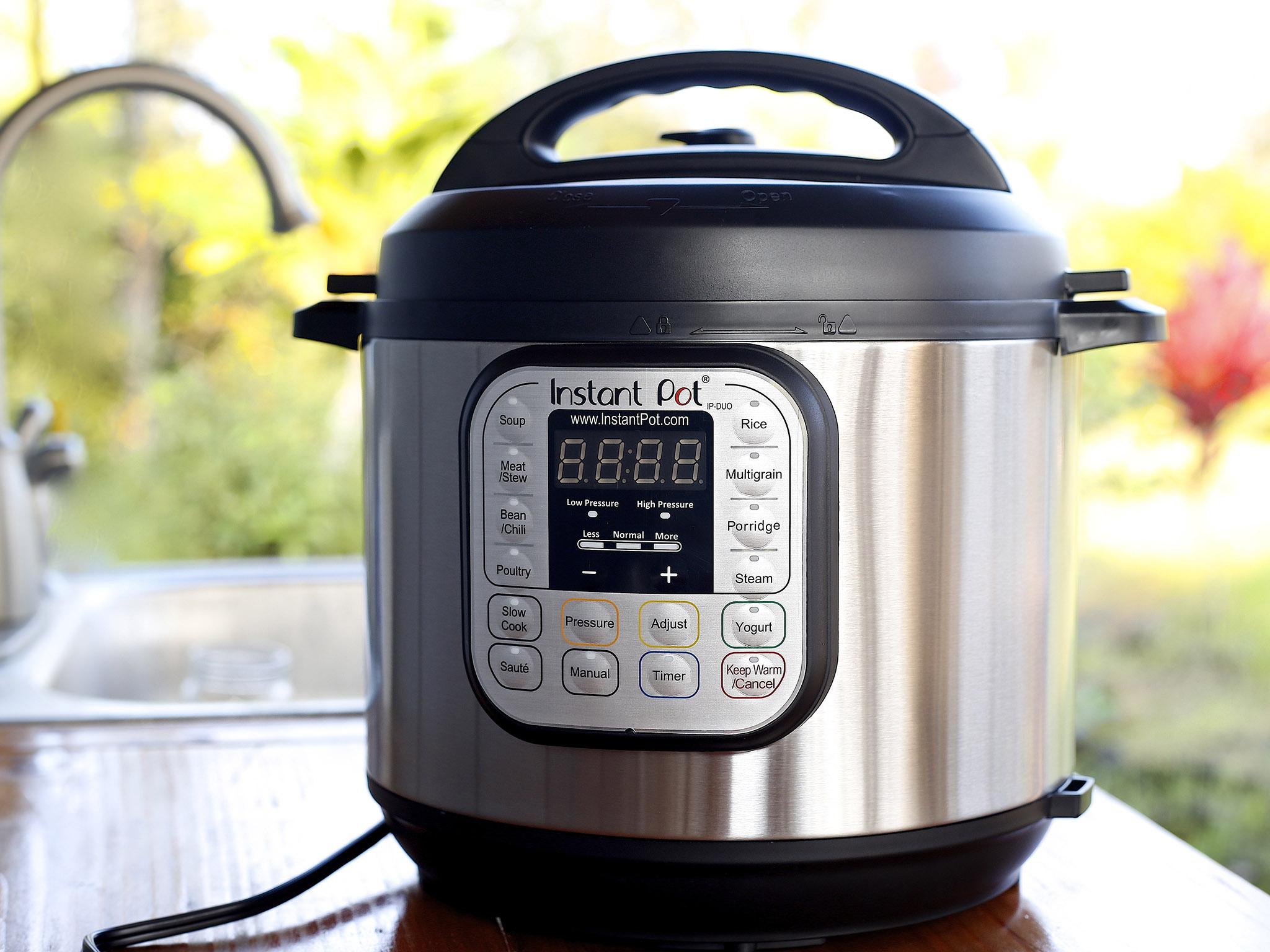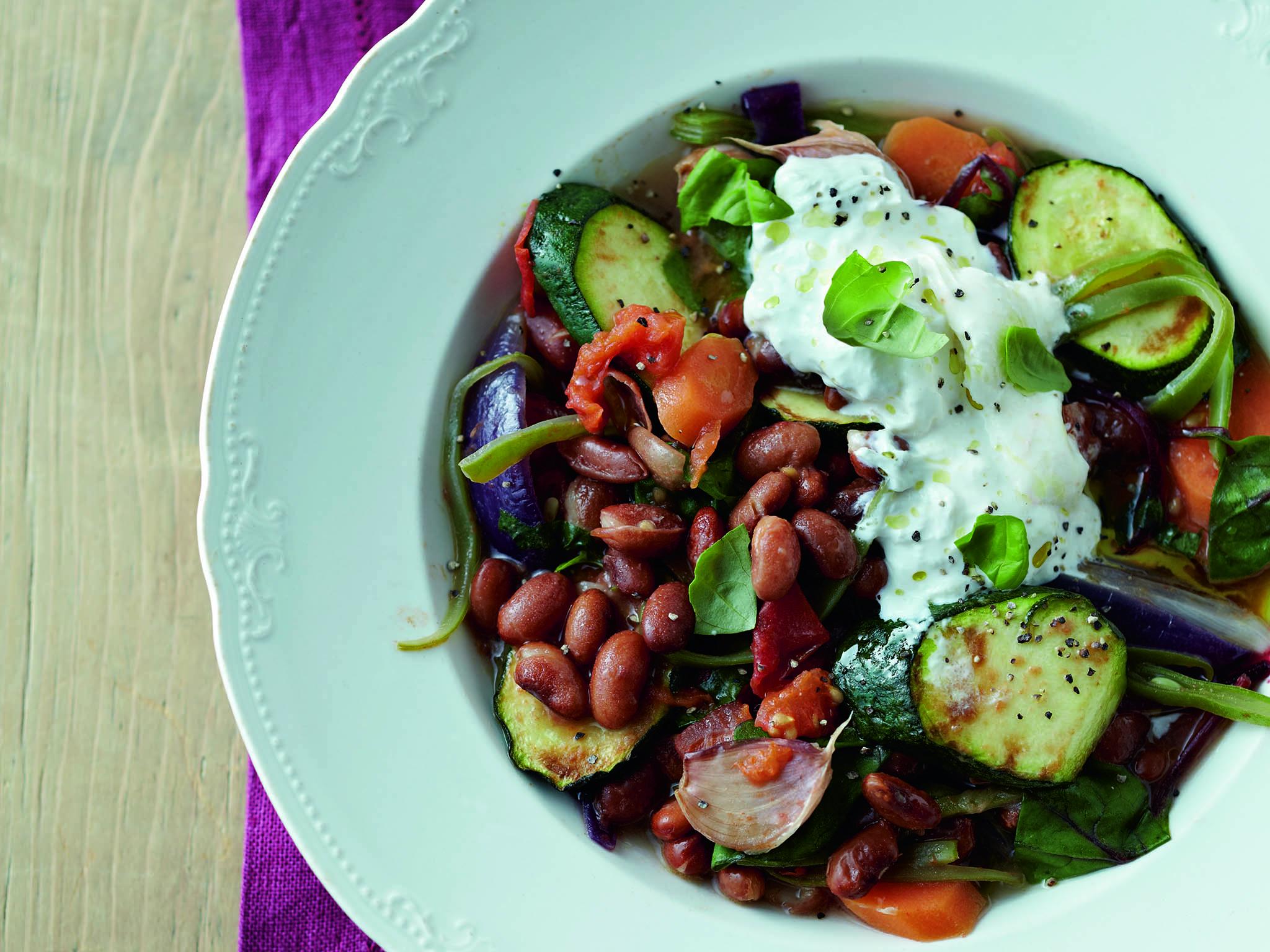The Independent's journalism is supported by our readers. When you purchase through links on our site, we may earn commission.
How the trusty pressure cooker has been brought up to date
Pressure cookers have struggled for decades to shake their Second World War rationing association. But now they are having a renaissance with celebrity chefs and TV shows, says Julia Platt Leonard

I’d never used a pressure cooker but then again, I’d never been hang gliding or cliff diving and isn’t a pressure cooker the culinary equivalent of an extreme sport? It’s got the danger and it’s got the risk and as far as I could see little real value. My stock pot, sauté pan and oven were handling things quite nicely, thanks very much. So I was wary about checking out claims that pressure cookers had changed, that they were safe and really – honestly – deserved a spot on my kitchen counter.
Pressure cookers aren’t new – they were a fixture in British kitchens after the Second World War for the simple reason that they used less fuel. Marguerite Patten demonstrated them at Harrods in a bid to boost their popularity but it was tough to get beyond their links to post-war austerity Britain. “I think there was this really strong association of pressure cookers with rationing food, so lots and lots of stewed offal and everything being very grey and beige,” says Catherine Phipps, food writer and author of the Pressure Cooker Cookbook. As soon as times improved, people ditched their pressure cookers and didn’t look back.
But now pressure cookers are enjoying a renaissance. Phipps says chef Heston Blumenthal deserves credit for going public about pressure cookers. “When he started admitting that he used them so did a lot of chefs and it kind of tied in with the whole modernist cuisine thing as well because they talked about how you could use pressure cookers,” says Phipps.
Now pressure cookers seem to be popping up everywhere including television shows like MasterChef where time pressed competitors realise what a boon pressure cookers can be. “Their repertoire could be expanded massively by using pressure cookers because then they could look at all the traditionally slow cooked cuts of meat they normally couldn’t do.”
Phipps says she was sceptical until she watched her Brazilian sister-in-law whip up a meal of black beans with sausages in just over half an hour, starting with dry, un-soaked beans. Now Phipps keeps two on the stove and uses them everyday for everything from risottos to pasta and steamed puddings. It’s her default method of cooking vegetables including broccoli and green beans that are notoriously easy to overcook using traditional methods.
Pressure cookers tick a lot of boxes. Phipps starts with the fact that cooking times are reduced by 70 per cent so you’re cutting energy costs as well as time spent in the kitchen. You save more money because you can use less expensive cuts of meat and dried beans in cooking. And studies have shown that food cooked in a pressure cooker retains more nutrients, so it’s healthier.
Phipps says there are lots of excellent stove top models from which to choose including her favourite, the German-made WMF brand. She does recommend getting a 6 litre or 6.5 litre capacity model so you can could make large quantities with the option for leftovers or freezing.
And my safety worries of apocalyptic steam explosions and visits to A&E? The new models have lots of safety measures built in so all it takes is a bit of practice and common sense. “The key thing is that these accidents have happened when people have put a pressure cooker on the stove and left them at a high temperature once they’ve reached high pressure,” says Phipps. Once it reaches high pressure, you reduce the heat. “I’ve never had an accident and I’ve been using them several times a day for years and years,” she adds.
There are also electric pressure cookers on the market which is what I decided to try. Phipps recommended the Instant Pot which is a multi-function cooker that can be a pressure cooker, slow cooker, rice cooker and steamer. You can sauté food in it and even make yoghurt. I did an initial test run as recommended which helped me figure out how it works, and the good news? It does work incredibly well.
After getting over my initial jitters I soon made a batch of chicken stock and then some chick peas using the pressure cooker function. With the chick peas, I drained off some of the liquid once they were cooked, switched to sauté mode then added tinned tomatoes, fresh spinach and some cooked chorizo. Dinner was ready in a frighteningly short amount of time. And the chick peas were cooked perfectly.
With Instant Pot, you can choose low or high pressure depending on the recipe, input the cooking time, and when it’s done the machine automatically switches to ‘keep warm’ mode. It has a quick release (this is the dramatic geyser of steam I’d been waiting for) or natural release where the steam is released gradually at the end of the cooking cycle.
I won’t lie – the Instant Pot is large so it takes up some space, but I don’t mind. You can do so much with it that it’s a counter top keeper. But whether you go for an electric or a traditional stove top model, it’s worth giving a pressure cooker a go. It’s changed the way Catherine Phipps cooks and I think it just might do the same for me.

Fresh borlotti beans by Catherine Phipps
During the summer, the markets across Europe are piled high with beautiful, fresh borlotti beans, unpodded and ranging from a vibrant cerise when at their freshest to a wrinkled café au lait when they start to dry out. Until recently, they were not so easy to find here in the UK, but I’ve noticed now that a lot of people are growing them alongside the more traditional runner bean, not only because they look so beautiful, but because they have such a wonderfully creamy flavour.
In winter I like to pair dried borlotti beans with bitter Italian greens such as cime di rapa or escarole. These aren’t available in the summer, so I use chard or perhaps rocket instead. You can omit them altogether and just serve the beans with lots of soft, buttery courgettes. I also like to break up some burrata cheese or very soft, fresh mozzarella over the beans, just before serving.
250g fresh borlotti beans, or around 125g dried beans
100ml white wine
1 head of garlic, separated into unpeeled cloves
1 savory sprig if you can get it, otherwise flat-leaf parsley
2 tbsp olive oil
1 large courgette, cut diagonally in thick slices
Bunch of Swiss chard, cime di rapa, escarole or rocket
Squeeze of lemon juice
2 large tomatoes, green core removed, chopped
1 red onion, cut lengthways into small wedges
1 carrot, very thinly sliced
100g runner beans, sliced
Bunch of basil, roughly torn
50g Parmesan, grated
Salt and freshly ground pepper
Extra virgin olive oil, to serve
Put the borlotti beans in the pressure cooker. If you are cooking fresh or soaked dried beans, cover with at least 2cm of water and add the white wine, garlic cloves and savory or parsley. Cook for 8 minutes if fresh, a scant 10 minutes if soaked. If you are using unsoaked dried beans, cook at high pressure for 20 minutes, then fast release, add the wine, garlic and herbs and cook at high pressure for a further 8–12 minutes.
Meanwhile, heat the olive oil in a frying pan. Over a medium heat, briskly fry the courgette until still firm but browned on all sides. If you are using Swiss chard, cut the stems into 1cm slices, squeeze lemon juice over them and fry alongside the courgettes.
Strain the borlotti beans, reserving 200ml of the cooking liquor. Return the beans and reserved liquid to the pressure cooker. Add all the vegetables, then season with salt and pepper, close the lid and bring to high pressure. As soon as high pressure is reached, remove from the heat and allow to drop pressure naturally. Stir in the basil and the Parmesan. Serve with a glug of extra virgin olive oil.
The Pressure Cooker Cookbook by Catherine Phipp, £20, (Ebury)
instantpot.co.uk
Join our commenting forum
Join thought-provoking conversations, follow other Independent readers and see their replies
Comments
Bookmark popover
Removed from bookmarks